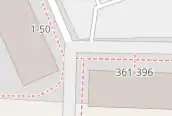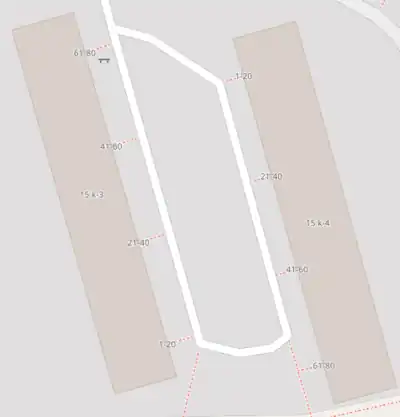Key:addr:flats
 |
| Description |
|---|
| The range of unit numbers within a larger building or complex. For example the range of flats behind the entrance door of a building. |
| Rendering in OSM Carto |

|
| Group: addresses |
| Used on these elements |
| Useful combination |
|
| See also |
| Status: de facto |
| Tools for this tag |
|
Use =* for marking the range of numbers of flats in a building or behind a door, for example, =97-117. If there is a gap in numeration, mark numbers and intervals with semicolon: =3-7;10;14;16-18.
Is some regions, if there is only one flat, the tag addr:unit=* is normally used instead.
A leading semicolon can be used when a flat number is implicit. For example, a house at '10 Some Street' converted into 3 flats with postal addresses of '10 Some Street', 'Flat 1, 10 Some Street' and 'Flat 2, 10 Some Street' can be tagged =1-2 and addr:housenumber=10.
How to map
Where there are multiple entrances to the building and each entrance leads to a different set of flats, then tag the respective =* on each entrance.
Where the building only has one entrance or there are multiple entrances but each entrance is not marked for a specific set of flats, then you can either tag =* on the main entrance=* node, or on the building=* way.
You should only place =* on multiple entrance=* nodes where the value of =* is not the same on each entrance=*.
Rendering
Example of addr:flats rendered on osm.org:

Similar tags
addr:flat=* - is used 103 times as of 2022-06-06, and is not documented.
This seems to be mostly used on businesses, and could perhaps be replaced with =* or addr:unit=*.
See also
building:flats=*- to specify the total quantity of flats (apartments/units) in a building.addr:unit=*- for the address of a single unit, including flats, offices etc.ref=*- for reference code of entrance (present in some buildings where there are multiple staircases - staircase coded as 1, 2, 3... or A, B, C... or I, II, III... are common)